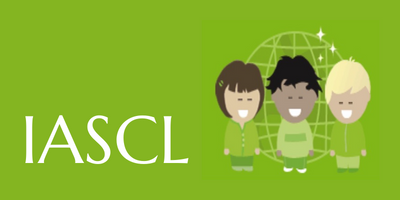The Acquisition Sketch Project
Rebecca Defina (University of Melbourne), Shanley E. M. Allen (University of Kaiserslautern-Landau), Lucinda Davidson (University of Melbourne), Birgit Hellwig (University of Cologne), Barbara F. Kelly (University of Melbourne), and Evan Kidd (Australian National University)
June 2nd, 2023
Figure 1. Frequency distribution of articles on English, other Indo-European languages, and non-Indo-European languages published in child language journals between 1974 and 2020. (Attribution: Figure taken from Kidd, E. & Garcia, R. (2022). How diverse is child language acquisition? First Language, 42, 703 – 735. https://doi.org/10.1177/01427237211066405. Figure reproduced under Creative Commons CC By 4.0 International License. No amendments were made to the source material.).
The field of child language acquisition has a proud history of crosslinguistic research. The pioneering work of many researchers, much of which appeared in classic publications like Dan Slobin’s (1985 – 1997) Crosslinguistic Study of Language Acquisition book series and Brian MacWhinney’s and Elizabeth Bates’ (1989) Crosslinguistic Study of Sentence Processing, highlighted the importance of taking into account the many ways that languages vary when building theoretical models of the acquisition process. In the words of the late, great Melissa Bowerman, by doing so we “guard against parochial explanations of language acquisition” and move “towards theories that do justice to language diversity” (2011, p. 616).
As the field has matured in the decades since those classic publications, more research on an ever-expanding list of languages has appeared. However, as is the case with any research, progress is incremental and slow. In a recent paper that took stock of the field’s language coverage in our four main journals (Journal of Child Language, First Language, Language Acquisition, Language Learning and Development), Kidd and Garcia (2022) reported that while research on languages other than commonly-studied languages like English and German is increasing, our evidential base is still severely skewed, mirroring similar problems in the cognitive sciences in general (see Blasi et al., 2022 for a recent review). They also reported that, in these journals, we only had papers on around 103 of the world’s current 7,000 languages. Figure 1 shows the results of their analysis, visualising the numbers of papers published each year according to three categories: English (54% of all papers), other Indo-European languages (30%), and all other languages of the world (16%).
So, despite our best efforts, there is still some work to do if we are to lay claim to a truly representative account of how children acquire their language(s). That is to say, we need to collect more data on diverse languages. There is some urgency to this need – we live in a period of rapid language loss: a good percentage of the world’s languages are no longer being transmitted to children, with this rapid trend increasing with every year that passes (see Bromham et al., 2022). This is not just a scientific problem: languages are crucial repositories of cultural knowledge, and maintaining connection to that knowledge via language is crucial to self-determination and psychological wellbeing. In the current International Decade of Indigenous Languages, we as child language researchers can work with communities to help stem the flow of language loss.
But where do we start? Kidd and Garcia’s (2022) analysis shows that increasing data on understudied and unstudied languages is a priority. There have been several recent proposals with this aim (e.g., Cristia et al., 2023; Jansco et al., 2020; Pye, 2021). Over the last few years, we have developed a model of data collection that aims at rapidly increasing language coverage in the field, with an eye to also giving back to communities that contribute data. Drawing inspiration from the field of language documentation, we propose that researchers write an “acquisition sketch” based on a minimum of 5 hours of naturalistic data from children aged 2 - 4 years. A sketch is a broad overview of properties of the input and children’s early language development, covering core topics in acquisition, such as acquisition of the phonological system of the target language, lexical acquisition, and the acquisition of morphosyntax. There is a lot of flexibility built into the model, with researchers being free to focus on one part of the linguistic system over others, particularly if the language has some unique properties not before described in the literature.
The full details of the project, including a detailed two-part handbook and the very first sketches, are now available as a special publication in the Open Access journal Language Documentation and Conservation (https://nflrc.hawaii.edu/ldc/sp28-the-acquisition-sketch-project/).
The special publication is a living issue. It is our hope that many more sketches will be added over the next few months and years, and that beyond the life of the issue the sketch model will be taken up by other journals. An important outcome of the sketch process is the archiving of a fully annotated corpus of the sketch data into an open repository, continuing the tradition of our field’s commitment to data sharing mechanisms like CHILDES. Thus, while every sketch will be a triumph in its own right, a long-term outcome will hopefully be a more diverse set of parallel corpora that can continue the tradition of Slobin and colleagues.
We encourage anyone who is interested in following the sketch format to submit their work to the project. To facilitate this process, we will be doing the following:
Bi-monthly online meetings that serve to guide researchers through the process of writing a sketch and build a community of sketch-writers.
A pre-conference workshop at the International Association for the Study of Child Language conference in Prague, July 2024.
If you are interested in writing a sketch and being involved in our online meetings, we would love to hear from you. You can get involved by completed in this online form: https://forms.gle/Akx5S2N6MnyypDvV8. Our first online meeting was on May 17. You can watch the recording on our YouTube channel: https://www.youtube.com/@AcquisitionSketchProject. Our next online meeting will be July 19 (watch out for announcements).

